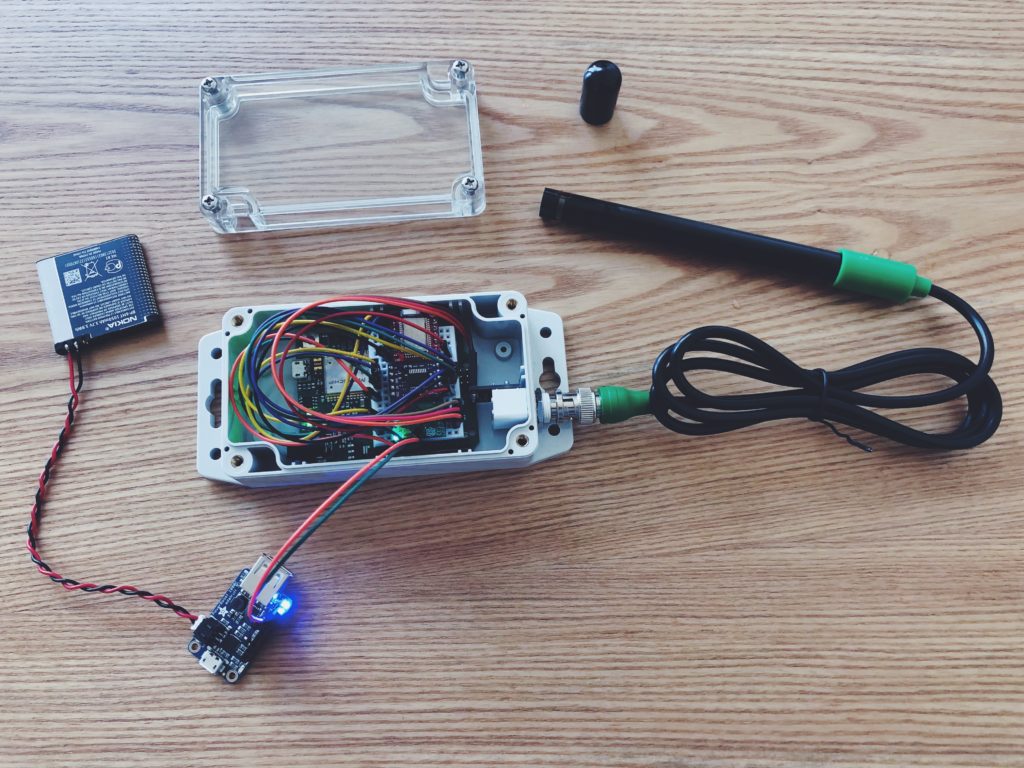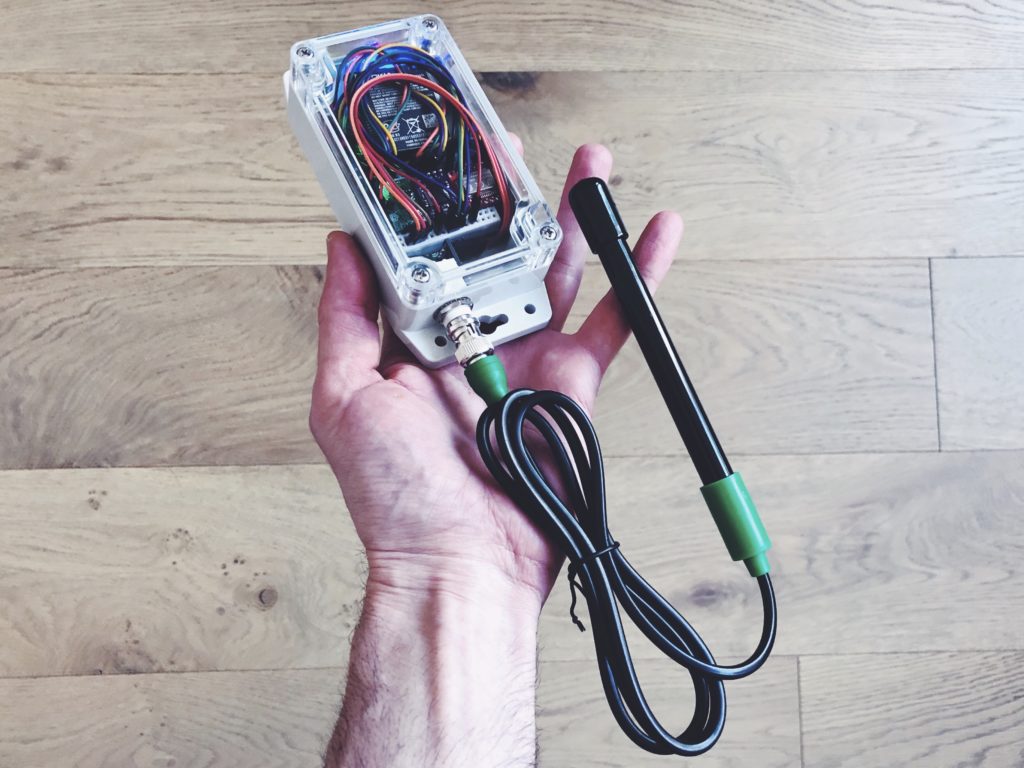Until now I’ve been powering the water quality sensors via a USB cable either to an external power supply, or directly to my laptop for debugging.
For the sensors to work in the real world they’ll need to have at least a day’s battery life if not a week to be useable. I can imagine going for a walk every weekend to replace rechargeable batteries would be fine, but any shorter than that might get a bit tedious.
I have a few friends in the mobile phone repair business, and they gave me a supply of phone batteries that were past their prime for supplying high amp outputs, but seem to be fine for a regular trickle like this project. So I’m hoping that maybe I can make use of a bunch of those 3.7v 1050mAh batteries and give them a new life.
To get their 3.7v up to 5v that The Things Uno uses, I’ll need a boost converter – so have been playing with this Adafruit 1000c.

This setup works very nicely, but given that these batteries are quite old I’d expect to only get about 85% of their original capacity from them. So let’s do a little test.

To my utter surprise, I actually got ~5 hours out of the old Nokia battery or about 90% of it’s original life. And that’s including the boost converter efficiency loss too. So things are looking good.
Clearly 5 hours is not equal to 1 week. So next I’ll have to go back to the Arduino code, and perhaps only measure once a minute instead of once a second, and see if I can get it to sleep in between to save battery life. 🤞🏼
But in the meantime, it’s nice to see it all fit in the water-proof case, and transmit for 5 hours without a problem!

